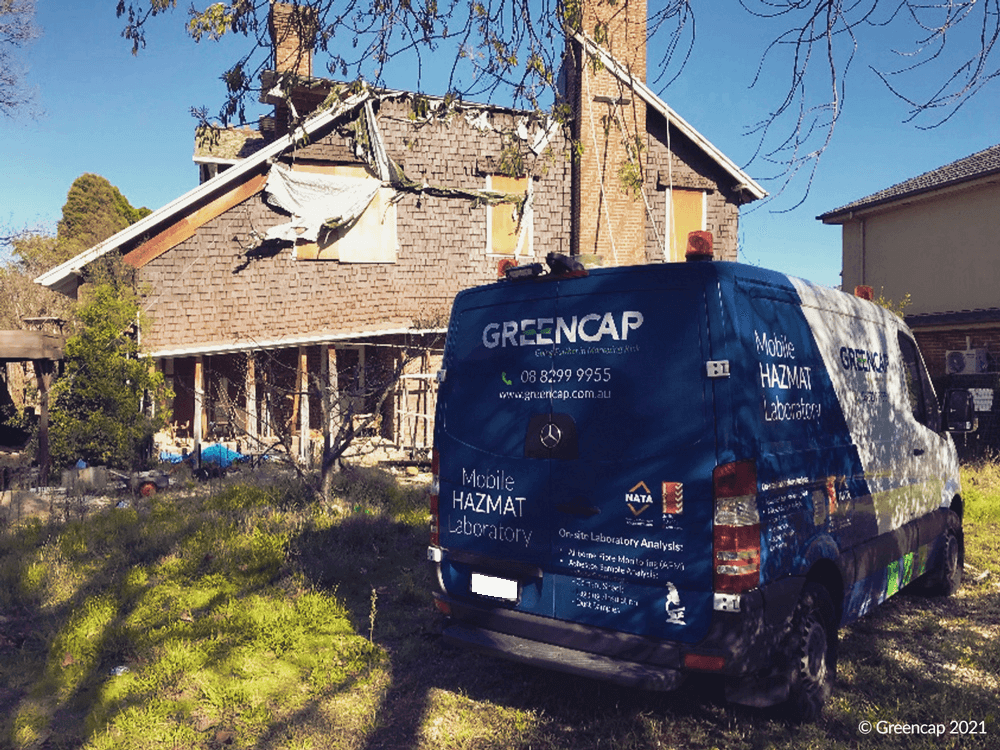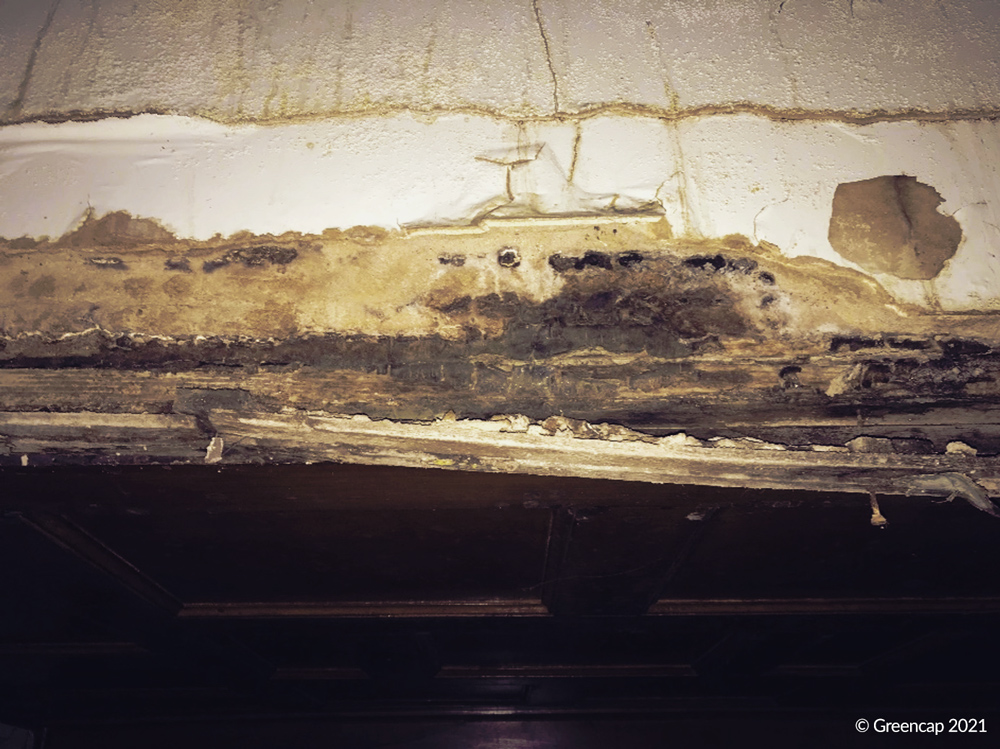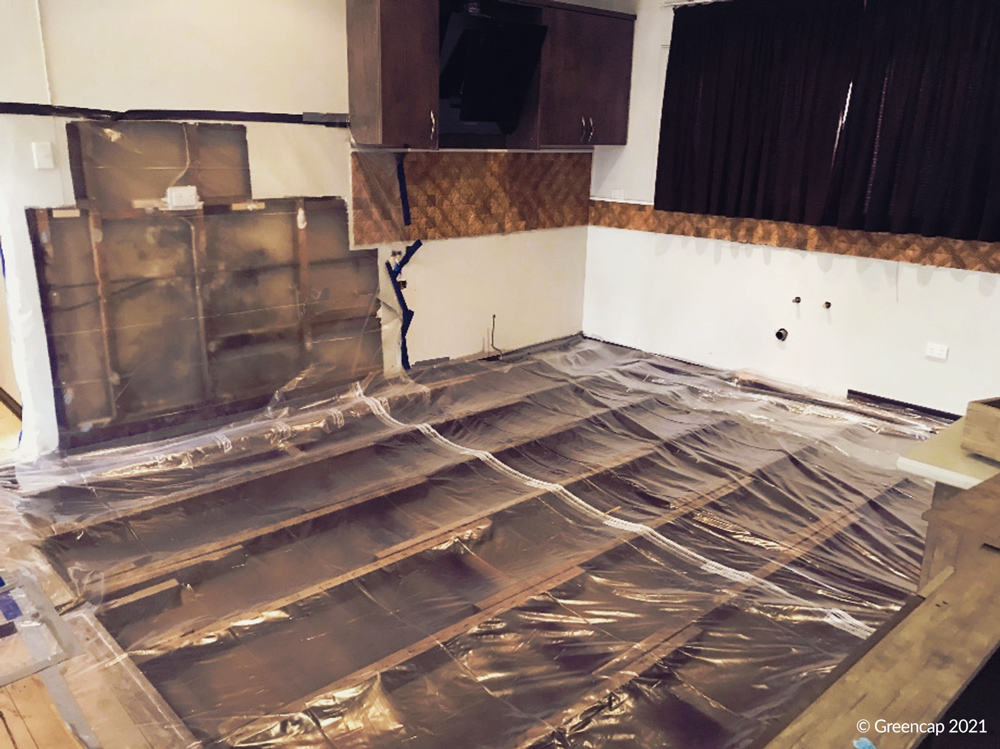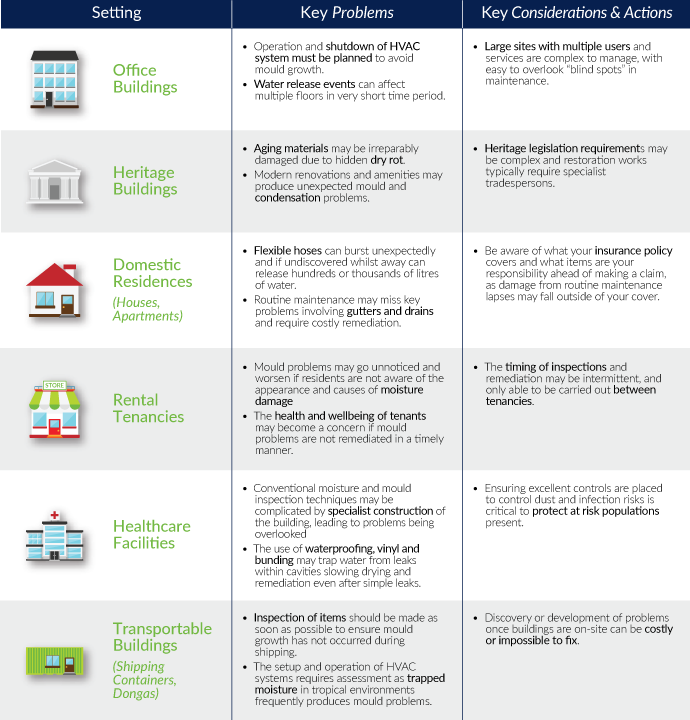News & Insights
Mould's Damaging Impact on Building Health & Structure
Mould growth in varied settings
The unwanted ingress of water and elevated moisture in buildings can lead to many issues and management challenges. Moisture and dampness can result in the growth and dispersion of mould within built environments and, when not adequately addressed, this can result in irreversible damage to assets and structures.
The health effects of mould are increasingly recognised and understood. However, the sheer impact mould can cause to the fabric of buildings is often not addressed appropriately, with inadequate management resulting in additional problems over time.
All organic materials are susceptible to mould growth. Common building materials that are composed of, or contain, wood or wood fibres, paper or cardboard are particularly at risk. Many paints, glues and resins will support mould colonisation, and carpets and insulations can hold significant water and debris. Therefore, while water ingress may occur in a few minutes, it can take weeks or longer to naturally dry, during which time mould spores may germinate and grow.
Variations in construction methods, building ages and end users also drastically shift each assets’ risk profile. Differing management approaches are required for domestic housing, modern constructions including health care and offices, heritage and historic buildings, and transportable buildings.

Greencap's mobile HazMat and Mould laboratory at the site of a severely water and mould-damaged historic building
Source: Greencap 2021
Domestic settings, houses, units & rental tenancies
Water damage and microbial growth, which can occur in domestic residences, are often not immediately detectable. Moisture impacts can remain unnoticed for long periods of time resulting in the proliferation of microorganisms and degradation of building materials.
In domestic settings, a frequent causes of significant water damage are failure or breaches to pipework, both supply and drainage, and from failure of drainage seals. Other causes of water ingress include poor maintenance of the building envelope, poor or inadequate design of stormwater/rainwater drainage systems, and even as a result of building modifications which breach the original building design or engineering controls.
The severity of water damage in the building may range from being purely unsightly, right through to affecting the health and wellbeing of occupants.
Greencap has investigated numerous causes of water damage and subsequent microbial growth within homes. The top ten (in no specific order) are:
- Bursting of flexible supply hoses to sinks, toilets, refridgerators and water filters etc. as a result of degradation of the rubber hose and/or due to increasing mains water pressure
- Pin hole leaks in breacher pipes to showers and other mixed water devices caused by aging copper pipework, degradation of non-compatible pipework materials, or a wall lining penetration
- Poorly maintained/degraded silicone sealants to the base of shower alcoves around baths and sinks causing particularly widespread damage in multistorey homes
- Poor joint seals/ground movement causing cracking and leaks to drainage pipes within a subfloor environment, which can go undetected for many years
- Poor maintenance to gutters and down pipes allowing for rainwater to overflow into the building envelope
- Inadequate design of box gutters assemblies and flat roofing in modern construction not being able to cope with the increases in water volume during rainfall events
- Leaks in flexible drainage hoses to dishwashers
- Poor maintenance of roof coverings, cracked tiles and storm damage
- Inadequate design and/or poor maintenance of surface drainage around the perimeter of buildings causing increases in soil moisture, rising damp and risks of flooding
- Renovations including rendering old residences which cover subfloor ventilation, resulting in condensation, air exchange and moisture control problems
In many instances, the majority of these can be managed by building occupants before significant problems occur.
Homeowners can mitigate many water damage events by checking for:
- Signs of degradation to all flexible hoses; particularly underneath sinks where chemicals are stored
- The condition of silicone seals and grout lines
- Tell-tale signs of water damage around showers, baths and sinks installations such as warped skirtings, blistering of paintwork, visible staining and concerning odours
- Indicative signs of water damage to ceilings, such as blistering of paintwork, visible staining, bowing or sagging, and concerning odours
- Ensuring that gutters and downpipes are free of obstructions and cleaned regularly
- Degradation in roof coverings, such as loose or cracked tiles, and rusting in corrugated sheeting
- Surface water run off around the perimeter of buildings
- Mains water to the residence is turned off when it is not occupied, particularly in holiday homes where visits may be infrequent
Rectification cost for these impacts can range from hundreds to tens of thousands of dollars. Certain situations also may not be covered by insurance policies, like if the event is the result of poor maintenance. Insurers often have maximum payout amounts for microbial contamination which frequently do not cover the full cost of remedial works.
The scope of remedial works required can vary dramatically, influenced by the severity of conditions, type and amount of impacts present, and the types and locations of materials affected.
It is good practice that any remedial scope is developed independently from the remediation contractor by an experienced and qualified Indoor Environmental Professional (IEP) such as Greencap, in order to determine the scope of the work.
After these works are completed, prior to reinstatement, an independent IEP should also verify that works have been performed adequately and that the situation has returned to normal/pre-event conditions or better.

Severe mould damage pulling apart the underside of a historic wooden staircase
Source: Greencap 2021
Heritage buildings
Heritage and historic buildings often suffer from similar building fabric damage as domestic dwellings. These buildings have the added complication of difficult or impossible to replace materials that require a specialist tradesperson to install. Changes in building use, modern renovations, installation of modern air conditioning and changes to wall and subfloor ventilation can cause previously stable conditions to become conducive to mould growth.
The age of wooden materials in historic buildings makes them more susceptible to attack from brown and white rot fungi rather than moulds. Timbers in subfloors that intersect masonry elements or come into contact with soils may slowly succumb to brown rot, causing significant structural issues. These fungi uniquely are able to spread through wall cavities and gaps in construction allowing them to access internal and decorative wooden elements and damage them from within. Additional historic items within these buildings may present health risks; for instance, heritage wallpapers, paints and pigments may contain toxic metal components such as arsenic and lead. Degradation of these items by fungi has been shown to release hazardous compounds into the indoor air space.
Remediation of heritage materials also requires specialised processes to ensure that additional damage is not done. For large water damaged items such as timber flooring or staircases, calibrated drying may be required to reduce warping or cracking. It may also be impossible or even illegal to conduct abrasive cleaning works or remove and replace items with modern building materials.
Before any renovation, remediation or repair works are carried out on heritage and historic buildings, ensure that you are aware of the listing status of your building and any legislation that applies. Recent changes to Victorian legislation in particular have strengthened the personal liability of building owners if they cause damage or fail to protect heritage buildings from deteriorating, including water damage and mould.

Preparing the space for mould and moisture assessment and safe removal
Source: Greencap 2021
Office, high-rise & healthcare facilities
Facility managers must frequently prioritise numerous competing compliance challenges, with facility maintenance being only one of many demands. The occurrence of mould growth due to water or low-level moisture intrusion presents a potentially costly problem.
Large water release events, such as damage to cooling towers or triggering of fire suppression sprinklers, can rapidly cause the inundation of wider areas with water, causing ingress into inaccessible cavities and through electrical and ventilation services.
The first three to five days are crucial in determining the extent and severity of remediation requirements. Under favourable temperature and moisture conditions, mould growth can occur in as little as 48 hours, with mould colonies beginning to consume materials, producing spores and producing more widespread contamination. Proactively removing wet soft furnishings and contents and beginning drying efforts as soon as possible will reduce the likelihood of expensive mould remediation.
More often in these settings, the setup, operation and shutdown of heating, ventilation, and air conditioning (HVAC) systems plays a major role in ensuring mould growth does not occur. Ensuring your system is adequately balanced with sufficient air mixing and dehumidification capacity can help prevent condensation, particularly in visually inaccessible areas such as within ceiling spaces. Similarly, during shutdowns and between tenancies, it is critical to have a shutdown and maintenance policy to mitigate the damage that stagnant ventilation can cause.
Instituting a routine mould inspection to take note of key moisture indicators in materials and environmental measurements, as well as visual observations of building and plant conditions can assist in actively minimising the damage from mould growth and in scheduling maintenance works before major problems arise. In warehouses and large facilities where changing end-user requirements have altered portions of the building fabric or structure, thermal imaging camera investigations may assist in identifying thermal bridges and areas of insufficient insulation where condensation is likely, or damage to the building fabric where rain or vermin may enter the building.
Due to the high occupancy and visitation of many office and health care sites, maintenance and renovation activities can cause significant disruptions to service. Managing site access, as well as dust controls to minimise mould spore dispersion in these settings, is important to ensure that occupants and services are not impacted by ongoing works.
In health and aged care facilities, it becomes critical that dust, spores and infection risks are managed to minimise exposure to high-risk residents and patients. In these settings it is strongly advised that you engage a suitably qualified advisor (such as Greencap) to assist in the planning and execution of mould remediation and renovation works to ensure sensitive populations are not put at risk.
Transportable buildings & shipping containers
The popularity of overseas built modular buildings including imported portables, dongas, mobile site offices and shipping containers has increased significantly over the last few years. In particular mining companies and government departments have ordered these prefabricated structures to be assembled and complexed on site; as accommodation units, and to provide onsite offices across Australia.
It is critical to inspect these buildings as soon as possible (and prior to mobilisation to site), as moisture and mould issues may develop during transport. The marine and shipping environment frequently experiences harsh weather events and widely fluctuating temperatures producing wind driven water ingress and condensation issues from trapped air. It is important to ensure that items such as flooring and wooden materials are checked for moisture, as packaging and placement of vinyl and carpets may hide mould growth, which is much more costly to address once buildings are delivered to remote sites.
Elevated moisture content in plasterboard and other building materials at critical stages of the installation and complexing of the buildings can be prevented with diligent monitoring and correct choice of material from the onset. A modular building mould prevention program starting from input in the design stage, through material choice, material installation, and covering shipping and on-site complexing, will prevent additional expenditure at commissioning.
The operation and habitation of transportable buildings also frequently results in mould growth, due to inadequate environmental controls, and during periods of storage or prolonged vacancy. Ensuring that moisture resulting from showering and washing, as well as ambient environmental humidity is controlled by appropriately sizing HVAC units or installing dehumidifiers, is key to the maintenance of assets and comfort of occupants, particularly in tropical environments.
Fundamental principles of mould management
Although mould in different settings presents different risks and requires different approaches, many fundamental principles apply regardless of the size and use of the asset:
- Identification of moisture issues and instituting a maintenance and inspection regime can mitigate many mould issues before they become costly to fix, whether the setting is industrial or domestic
- When problems do occur, acting rapidly to begin drying and engaging a professional to carry out a moisture assessment of your building will greatly reduce the potential for mould growth
- Make sure you’re aware what your insurance policy covers ahead of time, as this can speed the decision-making process when choosing what actions to take and when
- If your asset has high risk occupants or sensitive access and usage requirements, have a plan, or know who to contact to protect business continuity and the health of those affected
- Ensure you’re aware of your legal obligations to the health of your workers, building occupants and any heritage aspects relating to your building before works are carried out.

How Greencap can help
Greencap’s team of highly qualified and experienced mould specialists can assist in the assessment of mould in domestic, commercial and industrial settings, and assurance that remediation is carried out thoroughly and safely.
Fill in the form below for further information, or if you require any assistance in managing your environmental risks.
Disclaimer:
The information in this material is not intended to provide, and should not be relied upon, for legal or professional advice and is subject to change.
This material provides general information only and does not take into account your particular needs or circumstances. Before making any decisions, you should assess whether this material is appropriate for you and obtain legal advice tailored to you having regard to your particular needs and circumstances.
Greencap Pty Ltd (Greencap), its officers, employees and agents believe that the information in this material and the sources on which the information is based (which may be sourced from third parties) are correct as at the date of publication. While every care has been taken in the preparation of this material, no warranty of accuracy or reliability is given and no responsibility for this information is accepted by Greencap, its officers, employees or agents. Except where contrary to law, Greencap excludes all liability for this information.
If this material contains links to third party websites, Greencap does not control and is not responsible for the information contained within these websites. None of these links imply Greencap’s support, endorsement or recommendation of any other company, product or service.



Greencap acknowledges the Traditional Owners of Country throughout Australia and recognises their continuing connection to land, waters and culture. We pay our respects to their Elders past, present and emerging.



